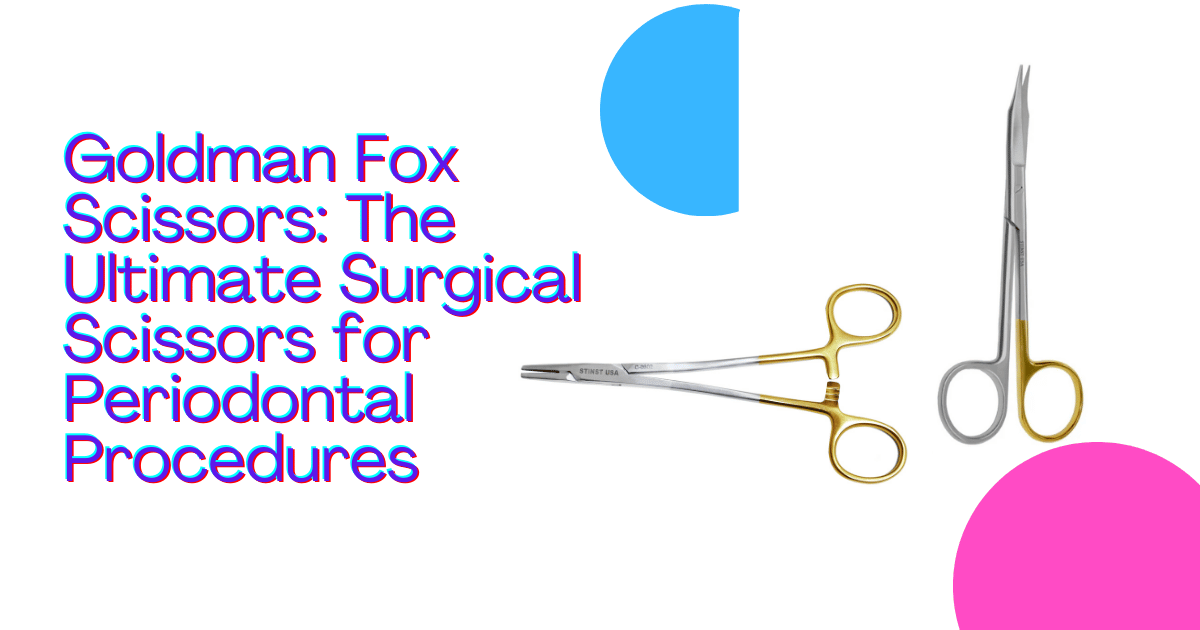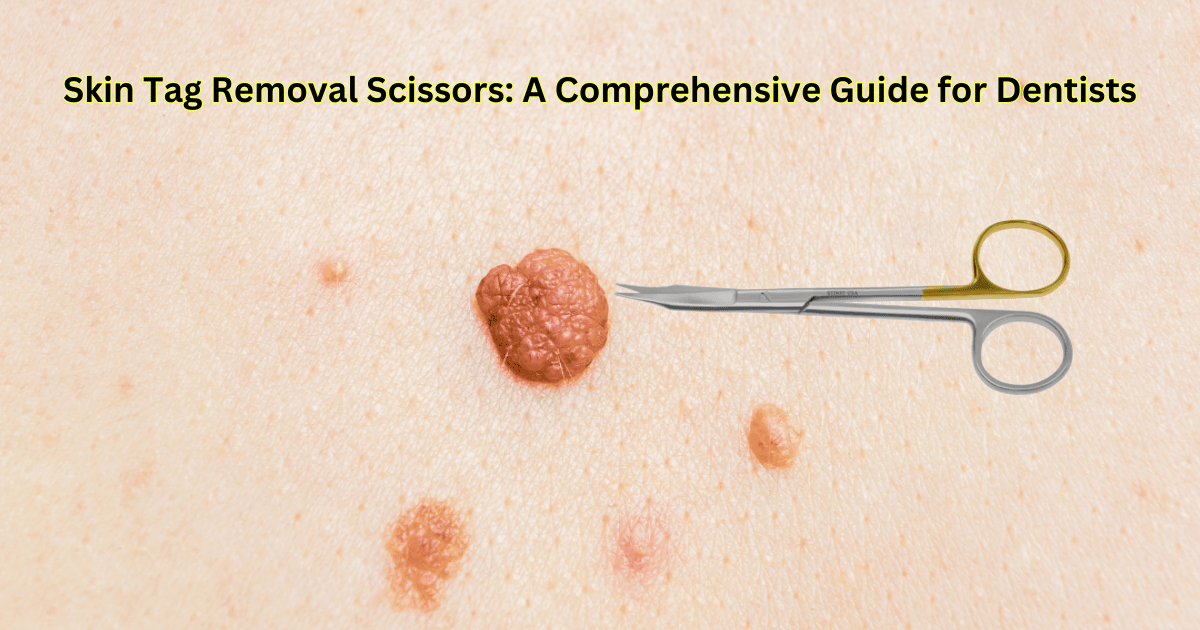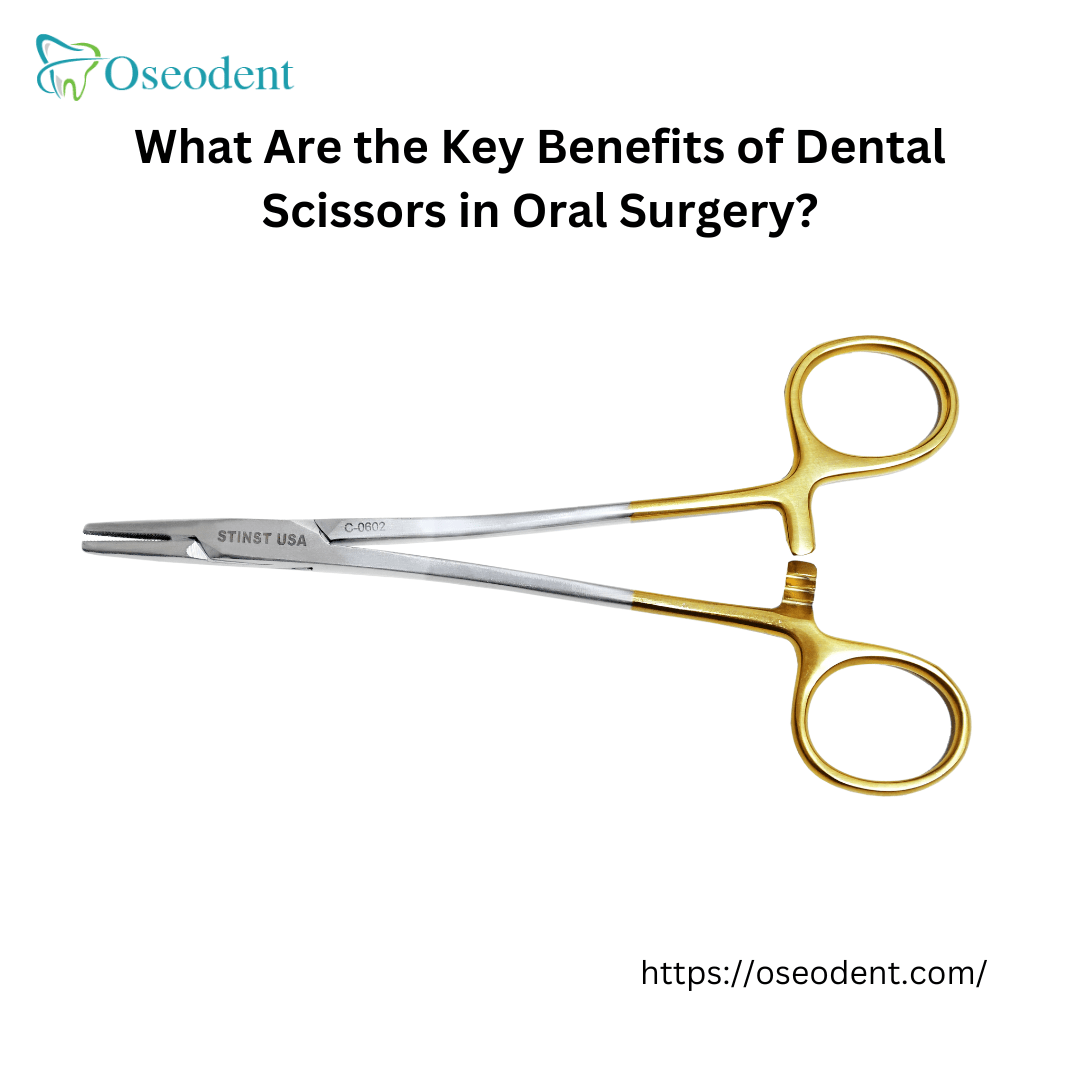Goldman Fox Scissors: The Ultimate Surgical Scissors for Periodontal Procedures
In the realm of dental surgery, precision and reliability are paramount. Among the essential tools in a dentist’s arsenal, surgical scissors play a crucial role, particularly when it comes to delicate procedures involving soft tissues. One standout instrument in this category is the Goldman Fox Scissors.
In this blog, you will learn about the renowned design and functionality of surgical scissors, which are particularly effective for periodontal instruments and soft tissue dissection, making them an indispensable asset in any dental practice.
The Importance of Surgical Scissors

Surgical scissors are not just ordinary cutting tools; they are precision instruments designed to facilitate intricate surgical tasks. The right pair of scissors can significantly impact the outcome of a procedure by ensuring clean cuts and minimizing trauma to surrounding tissues. This is especially true in periodontal procedures, where maintaining the integrity of soft tissues is vital for healing and patient comfort.
Features of Goldman Fox Scissors

The Goldman Fox Scissors are specifically designed to meet the demands of dental professionals. They feature finely pointed tips that allow for precise cutting in tight spaces, making them ideal for soft tissue dissection. The ergonomic design ensures that dentists can maneuver these scissors with ease, reducing fatigue during lengthy procedures.
- Precision Cutting Tools: The design of the Goldman Fox Scissors allows for unparalleled precision, making them suitable for various applications, including trimming gingival tissue and sutures.
- Serrated Blade Scissors: Many variants of these scissors come with serrated blades that enhance grip and control during surgical procedures. This feature is particularly beneficial when working with slippery or delicate tissues.
- Durability: Crafted from high-quality stainless steel, these scissors are designed to withstand repeated sterilization and rigorous use in a clinical setting.
Applications in Periodontal Procedures
In periodontal surgery, the ability to perform precise cuts is essential. The Goldman Fox Scissors excel in this area due to their sharp blades and fine tips. They can effectively dissect gingival tissue without causing unnecessary damage to adjacent areas. This capability not only improves surgical outcomes but also enhances patient recovery times.
When performing procedures such as flap surgery or gingivectomy, using the right periodontal instruments like the Goldman Fox Scissors can make a significant difference. Their design allows for controlled movements that help maintain the delicate balance required during soft tissue manipulation.
Benefits of Using Goldman Fox Scissors

- Enhanced Control: The ergonomic handles provide dentists with better control over their movements, which is crucial during intricate surgeries.
- Reduced Tissue Trauma: With their sharp blades and precision tips, these scissors minimize trauma to surrounding tissues, which can lead to faster healing and less postoperative discomfort for patients.
- Versatility: While primarily used in periodontal procedures, Goldman Fox Scissors can also be utilized in various other surgical settings, making them a versatile addition to any dental toolkit.
FAQs about Goldman Fox Scissors
- What are Goldman Fox Scissors used for?
Goldman Fox Scissors are primarily used for cutting and dissecting soft tissues during periodontal procedures and other dental surgeries. - How do serrated blade scissors differ from regular surgical scissors?
Serrated blade scissors have grooves along the blade that provide better grip on tissues, reducing slippage and enhancing control during cutting. - Why are precision cutting tools important in dentistry?
Precision cutting tools like surgical scissors ensure accurate cuts that minimize trauma to surrounding tissues, promoting better healing outcomes. - Can Goldman Fox Scissors be sterilized?
Yes, these scissors are made from high-quality stainless steel and can be sterilized for repeated use in a clinical setting. - What makes Goldman Fox Scissors ideal for soft tissue dissection?
Their finely pointed tips and sharp blades allow for precise cuts in delicate areas, making them perfect for soft tissue dissection in periodontal procedures.
Conclusion
The Goldman Fox Scissors are the ultimate choice for surgical scissors in periodontal procedures. Their precision, durability, and ergonomic design enhance dental surgery efficiency and improve patient satisfaction.
Incorporating high-quality instruments like these can elevate your surgical capabilities and patient care.Investing in reliable tools such as the Goldman Fox Scissors is crucial for dentists who want to excel.
With their proven track record in various surgical applications, these scissors will become a staple in your dental toolkit. Embrace the advantages of superior precision cutting tools and watch your practice thrive!










